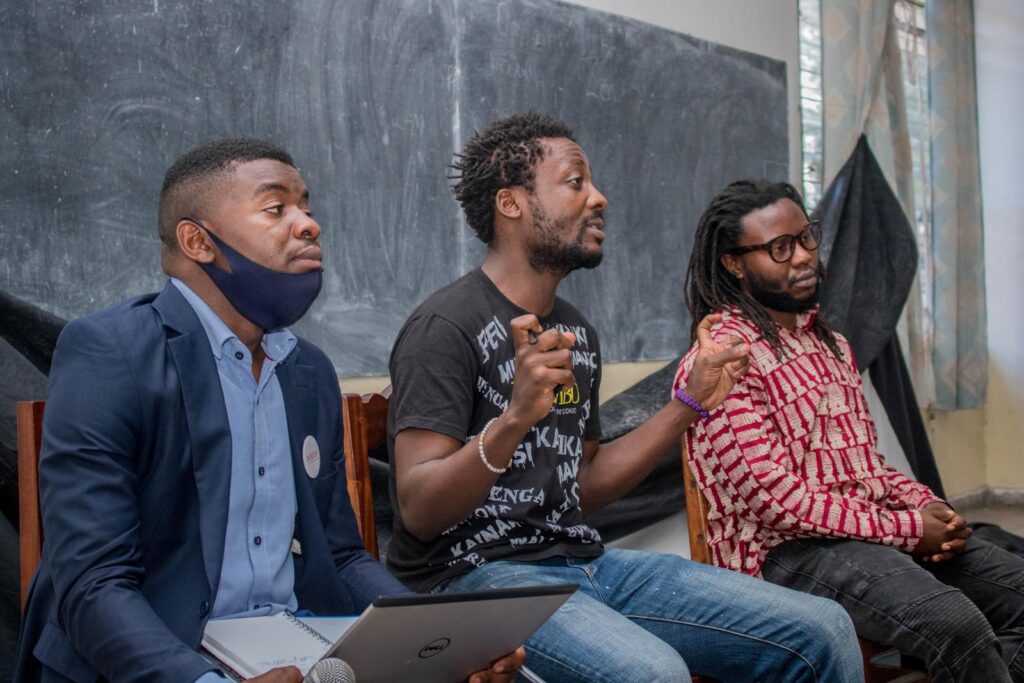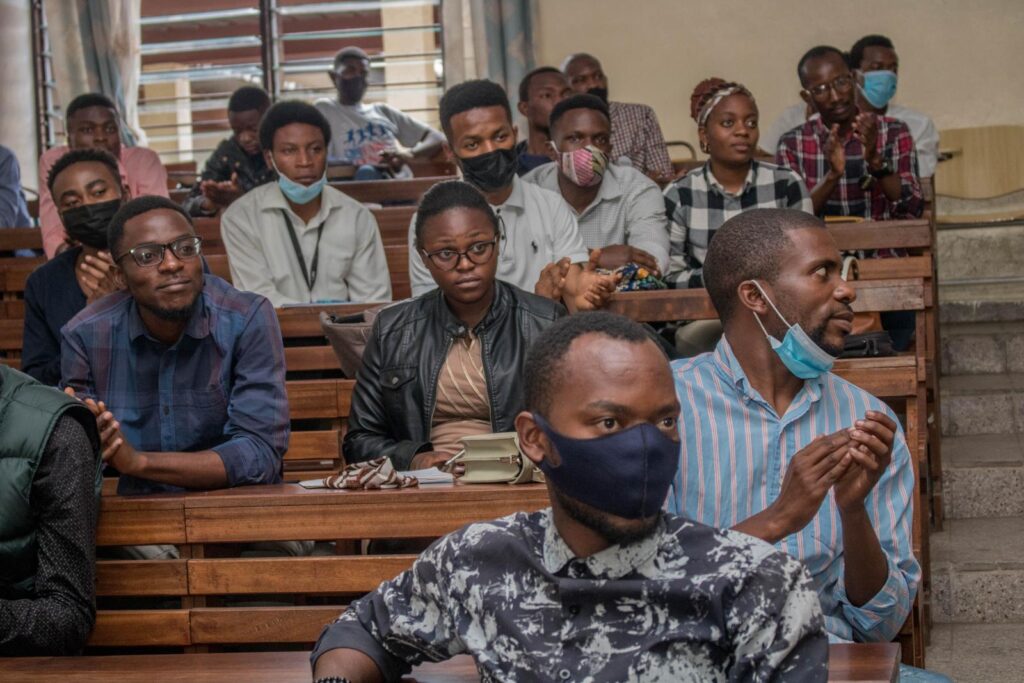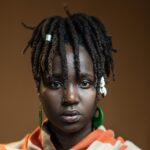Minds of the Movement
An ICNC blog on the people and power of civil resistance
by Feza ElianeApril 02, 2024
Lisez cet article en français.
-
This article is part of the REACT blog series, "Resilience, Perseverance, Innovation: Resisting Violence and Dictatorship in Africa".
Watch the series launch webinar here (in French with English interpretation)
Ben Kamuntu belongs to the generation of young Congolese born during the war who have never known peace. From an early age, he had to endure the death of his relatives, the looting of his family's possessions and the displacement caused by the war. As an adult, Ben Kamuntu joined the nonviolent citizens' movement Lutte pour le changement (LUCHA) to urge the Congolese authorities and the international community to promote peace, justice and freedom in the Democratic Republic of Congo (DRC).
This commitment earned him several months in prison. Instead of giving up, Ben Kamuntu has put his talent as an artist at the service of the fight for peace and justice in the DRC. In this article, Ben has done us the honor of answering our questions directly about his motivation behind the Bosembo video clip, which, with over 15,000 views on YouTube since its release in March 2021, has triggered a significant social transformation in the DRC.
Bosembo's plea for peace and justice in the DRC
Meaning justice in Lingala, the term bosembo highlights the plight of millions of Congolese victims of the war in the DRC. This work recounts the various serious crimes committed in the DRC and denounces the impunity enjoyed by the perpetrators. The artist's inspiration comes from his personal experience as a young man in Kivu, but above all from the UN mapping report, which lists the serious crimes committed in the DRC between 1993 and 2003.
"As long as there is no peace and justice in the east of the DRC, the souls of all those dead Congolese will continue to suffer", he reminds us. Although wrapped in shrouds and sometimes completely forgotten, the millions of dead in the DRC are on the move and roaring in search of justice. Bosembo is not just a song by Ben Kamuntu. Bosembo is a cry raised by the dead victims and humiliated survivors of the wars in the DRC to demand justice for the serious crimes committed in the DRC, in particular through the creation of an international criminal tribunal on the DRC."

Ben Kamuntu organizes slam workshops at universities. Image credit: Ben Kamuntu.
Why bosembo?
Ben Kamuntu: As an artist, I wanted to bring a dimension of questioning through art, images, choreography and poetry to talk about the need for justice as a pledge of peace, because we tell ourselves that we've already tried all the military means [...] but they didn't work. Personally, I think it's important to talk about this theme and that the path of justice is really the one that leads us to peace.
What changes have you seen following the production of the Bosembo slam?
B: I didn't do a survey to show that the change is palpable thanks to the video. [I'm] an artist who tried to shake things up. I think that since more than 15,000 people have followed this work on the networks, including 2,000 who have benefited from [my workshops] in universities, I think that I have contributed to this struggle for peace in my own way.
I haven't followed up on the question of finding an international court of justice for the Congo. But I think there's still a long way to go, and as an artist I'm trying to keep certain crazy utopias alive, especially that of peace in a region of conflict where I've never seen peace. As an artist, my mission is to keep this dream alive, to challenge people, to ask questions and to see if people can rally round this cause.

Image credit: Ben Kamuntu.
Bringing bosembo to the people
Artist Ben Kamuntu is convinced that peace, justice, reconciliation and reparation for the damage that was caused is possible in the DRC. However, if the fight for peace is to succeed, it must be taken up by as many people as possible. To this end, the artist has organized several workshops in various universities and secondary schools across the country to promote the Bosembo video. These workshops were an opportunity to raise awareness of the serious crimes committed in the DRC and the need for justice to build lasting peace in the country.
The unifying art of free popular expression
Nearly three years after the release of Bosembo, the video's plea for peace and justice in the DRC has yet to find favor with the Congolese authorities or the UN. However, the struggle to promote peace and justice through art is resonating with young people in Goma, the main city in the east of the country. Thanks to the Goma Slam Session collective that Ben Kamuntu set up with other artists in 2013, dozens of slammers and rappers from the city of Goma are using the power of their words to denounce the evils they are experiencing.
The collective is developing a number of other programs, such as slam therapy, taught in social centers to heal the moral wounds of war victims. Introductory slam-poetry programs have also been set up specifically for schoolchildren (slam at school), women (slam-feminin), young children (slam-elikya) and anyone else interested (slam-academia).
Analysis of slam
My personal analysis of slam is that it is an important communication tool in our community. After the discovery of slam and its migration to African countries, particularly the DRC, it has not remained a normal artistic discipline serving only as entertainment. Rather, it is a means of resistance and resilience in the face of oppression, a weapon in the peaceful struggle against violence.
But deep down there is hope beating in this soiled body, and that hope is SLAM. First and foremost, slam edifies and strengthens the artist, acting as individual therapy by healing the deep wounds caused by injustice and oppression. Slam is a medium, a common denominator between the artist and the public, because it has already spread to schools, universities, streets and conference halls with the aim of healing and educating the masses, inviting them to change and commit themselves to noble causes.
The spoken word, a way of life
The DRC is famous for its very popular rumba, which is now a UNESCO World Heritage Site. But in a war-torn region like Kivu, artistic genres that deal with everyday life and give a voice to the people are becoming increasingly popular. Bosembo is part of this trend, and Goma Slam Session is intended to provide a platform for its continued development.

Feza Eliane
Eliane Feza was born in Goma, in the province of Nord-Kivu in eastern Democratic Republic of Congo. Trained as a lawyer with a master’s degree in criminal law, she is a slam artist with the Goma slam session collective, and a trainer in slam therapy and women’s slam. She is also a blogger, women’s and children’s rights activist and environmental activist.
Eliane Feza est née à Goma dans la province du Nord-Kivu à l’Est de la République Démocratique du Congo. Juriste de formation, master en droit pénal, artiste slameuse dans le collectif Goma slam session, formatrice en slamothérapie et slam-féminin, elle est également blogueuse, activiste de droits de la femme et de l’enfant, et activiste environnementale,
Read More